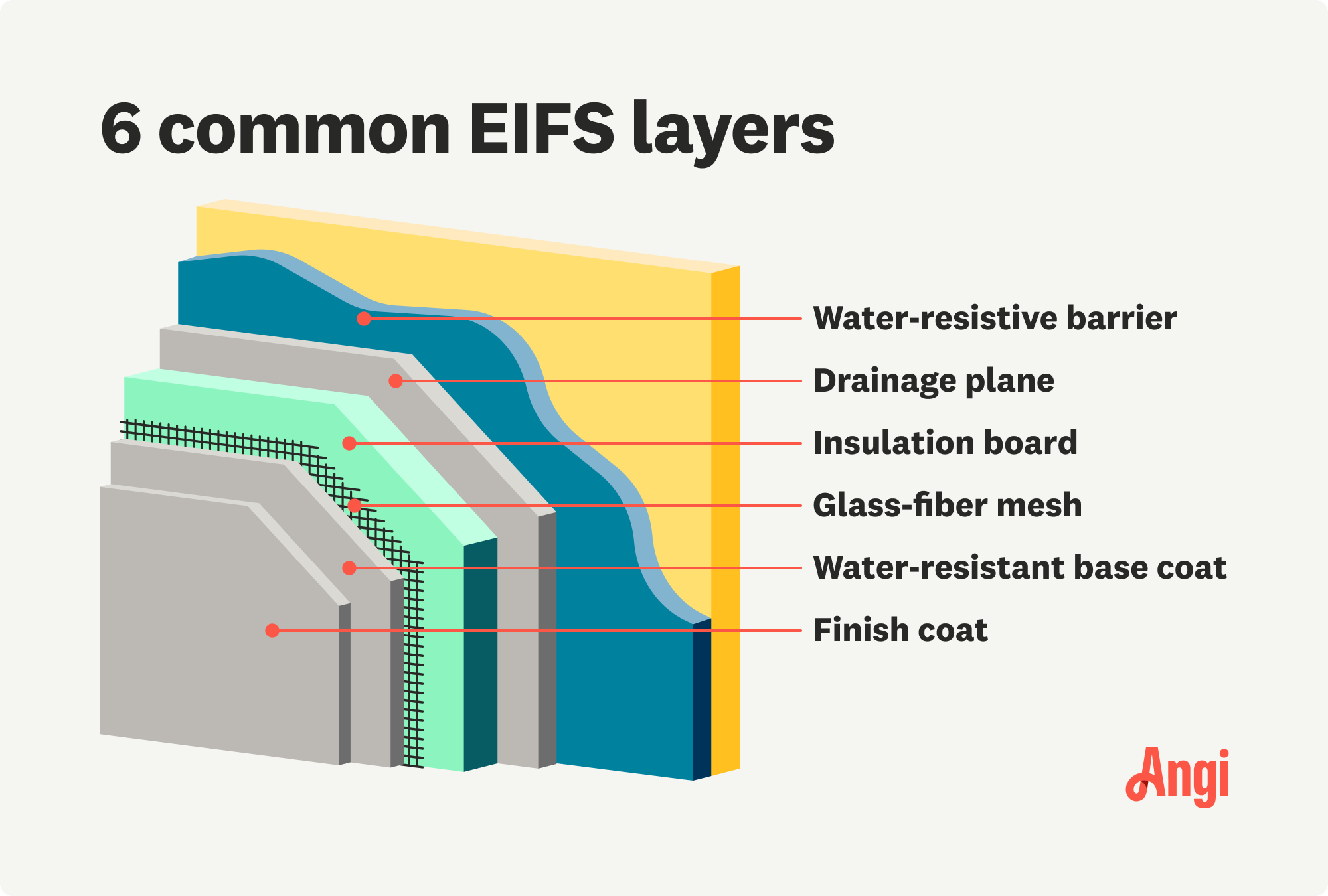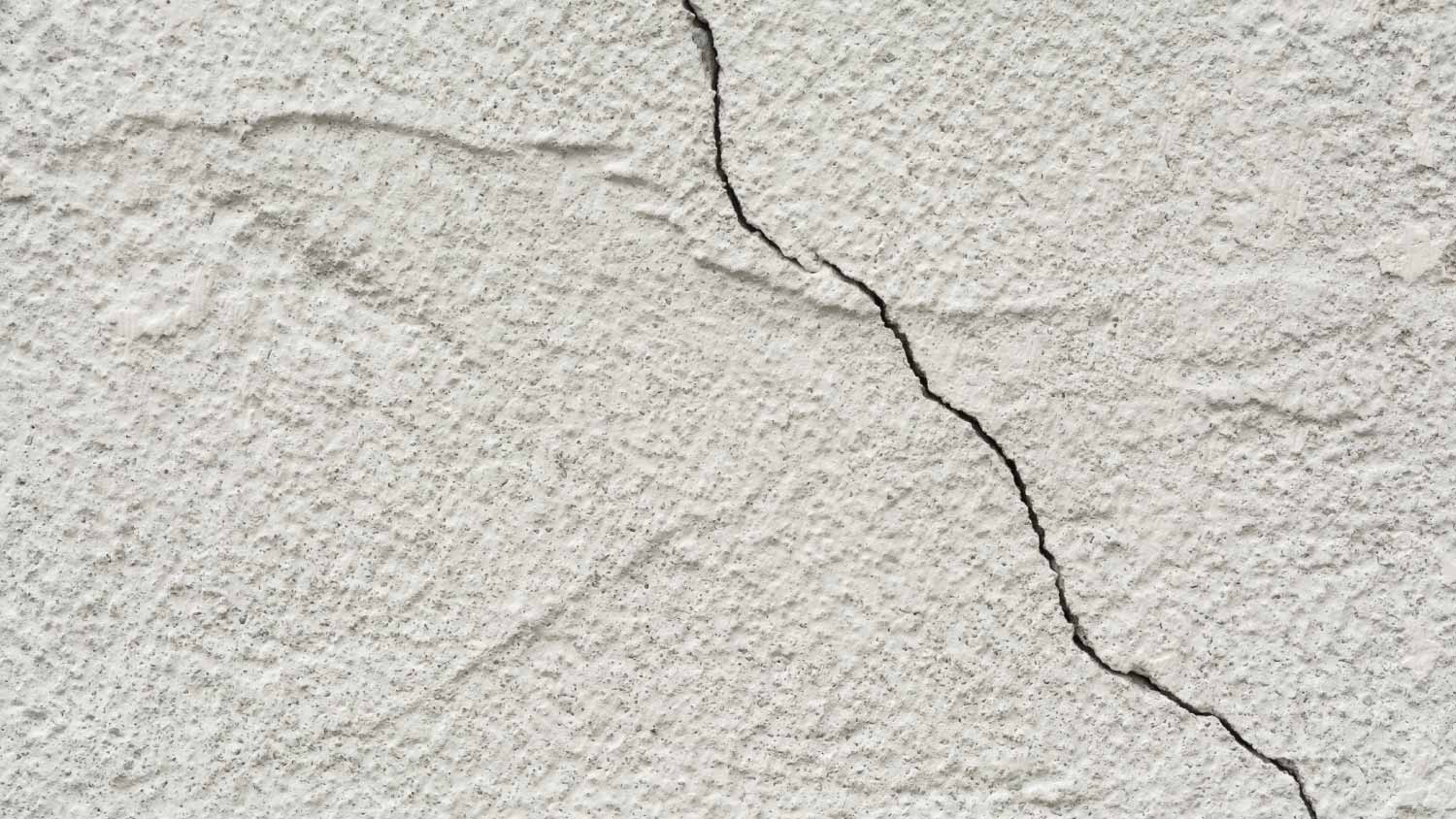
Considering a home exterior makeover with cladding? Find out the average house cladding cost to help you plan your budget.
Don’t get “stucco” on difficult damage—use our guide to pull off this repair


While the cost to repair EIFS professionally is around $400 per 10 square feet, hiring a pro to handle mid- to large-sized repairs is recommended.
Mistakes made during a DIY job can lead to water damage and mold formation.
Hiring a siding repair pro to inspect damaged EIFS can alert you to the extent of the problem and help you find the best possible solution.
You’re fresh off a trip to the grocery store with your key in the lock when you notice it—a crack in your exterior EIFS siding. Although you may want to drop your bags in defeat, learning how to repair EIFs is possible with a few everyday tools and quality compound. Learn more about your EIFS siding and how to resolve issues like discoloration, cracks, dents, or blistering.

Often referred to as synthetic stucco, EIFS stands for Exterior Insulation and Finish Systems, which is a material applied to the outside of your home to protect it from the elements. EIFS is made of six different layers, which include:
Water-resistant barrier
Drainage plane
Insulation board
Glass-fiber mesh
Water-resistant base coat
Finish coat
Although it resembles stucco, it’s a siding material that’s more expensive, energy efficient, and durable than the aforementioned option. Since EIGS installation can be complex, it’s important to know how to repair it if the finish is damaged.
The cost to repair EIFS depends on the severity of the damage and how much siding needs to be repaired or replaced. The cost to repair EIFS ranges from $300 to $500 for 10 square feet of repairs, depending on the type of repair. For example, water damage and mold can cost anywhere from $8 to $45 per square foot to repair, while discoloration and staining can cost $150 to $1,400 per square foot.

Knowing the indicators of EIFS damage can help you spot a problem before it spreads or gets worse.
Maybe the most problematic, water damage in your EIFS siding can look like discoloration or staining on the surface. If water is trapped behind the finish, you may notice peeling or blistering on the outside. These are surefire signs you should have the siding inspected by a local siding repair pro who can assess the damage and recommend next steps.
Whether small or large, cracks and dents in the outermost layer of the siding can signal that the siding is under stress due to foundation issues or insulation that needs repair. Some small hairline cracks may be common due to settling, but you should keep an eye on them to see if they expand over time.
Moisture caught between the finish coat and the insulation board can result in lifting of the surface that resembles blistering or bubbling. This is a sign that the insulation has become soaked with water and needs to be looked at or replaced.
Handy homeowners can take a stab at EIFS repair with the right tools and materials, assuming the repair is minor and covers a small area. Here’s how you can get your synthetic stucco in tip-top shape.
Use a wire brush, sponge, or scraper to remove any dust, dirt, and debris from the area. Let it dry completely.
If you’re repairing small cracks or dents, take a utility knife and cut clean lines around the dent or crack. Use a putty knife to fill the area with the appropriate patching compound, allowing it to dry before adding another layer.
Once the compound is even with the rest of the siding and not yet dry, smooth out the edges with the putty knife and, if needed, apply a damp sponge to smooth the top of the compound.
Let the area dry for one to two days before checking to see if additional compound is needed. Repeat the entire process as needed.
The best way to take care of your EIFS siding is to power wash it regularly and inspect it as often as possible for water damage, which is its most common issue. The earlier you catch small cracks, dents, separation, or bubbling, the less extensive the problem will be and the less you’ll have to pay for repairs. Consult your local siding contractor for additional maintenance tips based on your specific home needs.
Small EIFS repairs are easy enough for an experienced DIYer to tackle, however mid- to large-sized repairs should be handled by a siding repair professional near you who has the equipment, skillset, and experience to make your siding look brand new. Whether you’re dealing with a small hairline crack or excess moisture that has led to mold, it doesn’t hurt to get a professional opinion to see how extensive the problem is and what steps need to be taken to fix it.
From average costs to expert advice, get all the answers you need to get your job done.

Considering a home exterior makeover with cladding? Find out the average house cladding cost to help you plan your budget.

Learn about the average siding repair cost to expect based on siding type, repair type, and extra labor when getting estimates to fix siding from contractors.

Insulated vinyl siding costs are about double traditional vinyl siding—but the energy savings are more than worth the investment. Learn more in our guide.

If you have woodpeckers pecking on your house, you may be at your wit's end. Read this to learn how to stop woodpeckers from pecking your house.

Save money and maintain your home’s structure by learning how to repair vinyl siding in minutes with this handy DIY guide.

Wondering how to plan and shop for vinyl siding? This guide covers vinyl siding dimensions, how to measure your home exterior, and more.